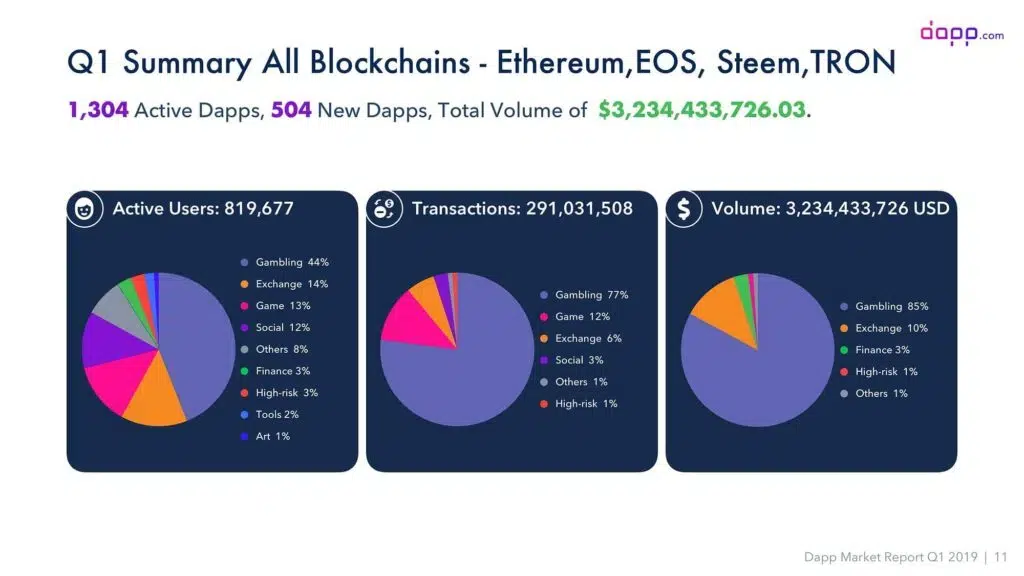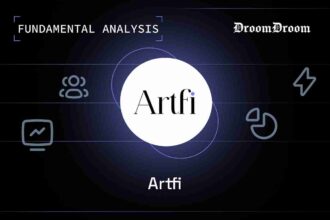It is worth noting only through the development of DApps within blockchains that the future of crypto tokens can be ascertained. With blockchain becoming more widespread in different business sectors and the demand for correctness, openness, and analysis increasing, learning about DApp’s data will give complete explanations of tokens and where they are headed.
- Dapp Data and Its Influence on Token Valuation
- Dapps Data Used in Crypto Tokens Metrics
- Case Studies and Examples
- Challenges and Considerations
- Data Accuracy and Reliability
- Transparency and Data Integrity
- External Influences and Market Dynamics
- Interpretation Complexity
- Data Standardization
- Effective DApp Data Analysis
- Achieving Access to Dapp Data Tools and Platforms
- Other Platforms and Explorers
- Future Trends
- Enhanced Token Utility Through DApps
- Improved Data Accuracy and Transparency
- Standardization of Metrics and Reporting
- Deeper Analytics and Predictive Models
- Regulatory Adaptation and Compliance Solutions
- Integration with Traditional Finance
- Conclusion
DApp data refers to information generated by the decentralized applications(dApps)on blockchains. It includes user interactions, smart contract action, and network activity. Analyzing DApp data gives you a sense of how much user interest there is in the application, what sort of tokens utility it offers within its ecosystem, and ultimately whether topic crypto projects have a good prospect.
Token valuation is set to be defined using refined accuracy and transparency for reports, standardized metrics, and predictive models that are fueled by DApp analytics. This data will be essential in determining how tokens behave and which way the crypto world is going.
Several cryptocurrencies are gaining popularity with their distinct specifications in usage. DApps are very important in the ecosystem. They give the performance and opportunities for different types of cryptocurrencies. Those who want to make informed decisions about DApp tokens must understand how to do so.
For instance, some DApps run on decentralized networks such as Ethereum, Binance Smart Chain, and so forth. Such DApps usually employ blockchain technology that provides additional functionality for these applications compared with traditional ones. The crypto tokens are built on these networks and they play different networks, and roles, ranging from the digital versions of currencies like bitcoin and utility tokens meant for particular platforms or services.
Dapp Data and Its Influence on Token Valuation
The usage of crypto tokens is evident in the information stored by the data. Measuring the performance of DApps is crucial in evaluating token utility, network activity, and user engagement. The critical statistics comprise transactional volume, the activity rate of users, the number of smart contracts interacted with, and the amount stuck inside such contracts.
Twitter has additional information on the same:
Dapps Data Used in Crypto Tokens Metrics
Transaction Volume and Frequency
These key indicators include transaction volume and frequency to determine how much a token is used on DApps Apps. Token’s utility and demand within the ecosystem is demonstrated by a high volume of transactions.
Active users’ interest in continuous and regular transactions indicates that a network is stable, and most importantly, the prospects for a token are promising. Moreover, monitoring transaction profiles such as surges or ongoing developments reveals information about users’ habits and market dynamics.
User Activity
The analysis of the number of active wallets and unique addresses participating in transactions with a decentralized application is significant for understanding how popular it is and what sort of users adopt its related token. An expanding and varied community is symptomatic that acceptance and demand for the token is on the rise.
Also, watching user activity tendencies, like retainment rates or repeated actions, gives an insight into the stickiness of the token in the DApp community and therefore its possible persistence in use.
Smart Contract Interactions
Information on the functionalities and use of tokens in relation to smart contract interactions reveals a lot about a token’s functionality and use within decentralized applications. Such monitoring proves the token’s ability to be compatible with different operations in the blockchain framework. Such trends with regard to smart contracts suggest more utility of the token and its wider applicability than just being useful in transactions.
Total Value Locked (TVL)
TVL refers to the total value of assets in cryptocurrencies or any other application that is totally locked up on smart contracts in this context. It is one of the major metrics signifying the utility value of the token and the reliability users have on these decentralized applications.
High TVL means a healthy community using coins as payment for loans and lenders, so tokens play a core role in the existence of a functioning ecosystem in the Defi sphere and have prospects for development because of it.
These metrics on the basis of DApp data give detailed information about the utility of the crypto-token, its acceptability in the market, its activity, and the possibility of the development of tokens in decentralized applications. Taken together and analyzed, they depict a full picture of how and what a token performs and the role of this entity in the whole system of the blockchain.
Case Studies and Examples

DeFi Platforms
Uniswap
The usage of tokens in a decentralized exchange (Uniswap DApp data) provides an understanding of how people utilize these tokens for trading. The token demand patterns, trading behaviors, and liquidity strategies involved are revealed by monitoring transaction volumes, liquidity pools, and paired tokens of Uniswap. Furthermore, analyzing the TVL in different liquidity pools shows the confidence that users have in particular tokens and this is what they are giving them liquidity on.
Aave and Compound
Decentralized platforms such as Aave and Compound are focused on lending and borrowing purposes. Looking at decentralized application figures from this perspective, we can see some particular tokens used as pledges for lending and earning interest in them. This can be measured through metrics like the interest rates paid per individual borrower’s usage, total borrowing volume, and other features.
Gaming DApps
Axie Infinity
Data for Axie Infinity’s blockchain use case; token usage in the context of blockchain-based games. It entails following user activities, token movements for gaming money, and interrelationships within the marketplace, so that one may know if the token is game cash or can be exchanged with a unique rare digital item. The frequent transactions of particular gaming objects or tokens imply that these artifacts hold some price for the gamers’ community.
NFT Marketplaces
OpenSea
OpenSea reveals data regarding the token utility within the digital collectibles category and the dapps that are hosted on the top NFT marketplace. Tracking token trades, sales, trading volume, and collections’ popularity is used for the assessment value of token assets. Additionally, one can track user engagement statistics with respect to NFT category, which also may reveal broader trends in relation to all digital arts or collectibles markets.
Research on dapp data in various industries helps analyze how much people use tokens, what exactly they want, where is the market for them moving, and so on.
Challenges and Considerations
Data Accuracy and Reliability
However, the authenticity of the data that may come through DApp may not be guaranteed. Nevertheless, blockchains are open and some of the on-chain data may either be untrue or difficult to verify. Errors in recordkeeping, manipulation of metrics, or gaming performance measures can damage the reliability of data.
Transparency and Data Integrity
Although blockchains offer transparency, all data of DApp may not necessarily be easy to view and transparent. This will be due to different platforms lacking details and visibility about the entire process of their operations, making it difficult to understand user activities or how tokens are being used.
External Influences and Market Dynamics
External factors, including such variables as macroeconomic developments, market sentiment, and government policy regulations, may cause some negative impact on the DApp metrics. External factors such as these have the potential of distorting data analysis and therefore, token metrics need to be interpreted, bearing in mind their effects.
Interpretation Complexity
Interpreting DApp data correctly calls for knowing how blockchains work, what smart contracts are, and the features of every DApp. It could also be quite difficult for a person who is not technically sound to understand and make sense of data under such complexity.
Data Standardization
It is difficult to compare one DApp with others due to the lack of standardized metrics used in DApps. However, there could be different data structures for the DApps and this could pose challenges in providing a uniform evaluation framework. Developing consistent and shared measures between systems is challenging.
Effective DApp Data Analysis
Validation and Verification
Cross-checking and verifying data from various sources can improve the reliability of the data. Before arriving at any conclusion and when making any decision, users must take measures to ensure that all the necessary procedures have been followed when generating and verifying the DApp data for accuracy and reliability purposes.
In-depth Understanding
One must note that analyzing DApp-related data must be done with a wider view regarding the current crypto environment. The use of external market factors influencing price and overall sentiment when assessing token DApp information also provides a clearer picture.
Technical Proficiency
Data interpretation accuracy depends on a firm understanding of blockchain technology, smart contracts, as well as DApp functionality. Analyzed by experts or collaborating with technical specialists improves comprehension and clarification.
Long-Term Analysis
It is essential to take a long-term view while examining the DApp data. However, in some cases, short-term fluctuations do not always indicate the total wellness and prospects of a token or DApp environment. It gives a larger picture of long-term trends.
Such challenges and considerations are an important aspect of investing in DApp data to evaluate crypto tokens with investors, analysts, and other stakeholders seeking to profit therefrom. These problems are critical for consideration and could improve evaluation precision in the volatile blockchain environment.
Achieving Access to Dapp Data Tools and Platforms
DappRadar
DappRadar is a notable one among the platforms offering extensive analysis, data, and trends on decentralized apps from various blockchains. In this case, it is based on data about user activity, transaction volumes, token performance, and scores of different DApps.
The system enables users to monitor metrics, such as daily active users, transaction counts, volumes, and token prices, across a diverse blockchain environment. Investors and users can make better-informed decisions regarding the choice of DApps in terms of performance characteristics through comparisons that can be made with information provided by DappRadar.
Dapp.com
Another data aggregating and analytic DApp platform is Dapp.com. It provides information on engagements, transactions, utility of tokens, and community activities at the DApp level. The tool allows users to navigate through various DApps, examine their performance metrics, and comprehensively understand the utilization of tokens in diverse decentralized applications. Dapp.com also ranks and gives reviews on DApps, making it possible for users to find deserving projects.
TokenInsight
TokenInsight is into blockchain data analysis and provides a deep analysis of DApps and tokens. It offers thorough information on DApp usage, tokens, trending market, and analysis of performance. These include data on user adoption, token movements, interactions with Smart Contracts, and market sentiment analysis among other things analyzed by TokenInsight analytics. It provides comprehensive reports, ratings, and researched information about various crypto tokens to help users base their evaluation decisions on data.
Other Platforms and Explorers
Besides, numerous other blockchain explorers and analytics tools exist, each providing DApp data but with different features or concentrations. Further information can be found on platforms such as State of the DApps, Dapp review, and Dappboard concerning user activity, token transactions, smart contract interaction, and ranking in DApp ecosystems.
These platforms provide data about DApps that are presented in a way users can understand. The data includes information on token performance, adoption by consumers, markets, and ecosystem dynamics within the blockchain setting. These tools enable users like investors, developers, and enthusiasts to analyze DApps data so that they evaluate crypto tokens in an ever-changing blockchain environment.
Future Trends
Enhanced Token Utility Through DApps
Blockchain technology will be integrated into different industries and will support the design of increasingly advanced decentralized applications. The implementation of these DApps will provide more functionality to crypto tokens, thus making them utilitarian. DApp data will expand to reflect the ever-increasing use of tokens in the financial, supply chain, health care, and game development sectors.
Improved Data Accuracy and Transparency
Most probably, initiatives aimed at enhancing data integrity and transparency in DApps and blockchains are anticipated to grow. Increased efficiencies in data reporting systems and better procedures for validating data reports will be inevitable with the progression of developments in blockchain platforms and protocols. This will ensure the credibility of DApp data, resulting in more authentic token utility and ecosystem features.
Standardization of Metrics and Reporting
Normalization of DApp’s metrics and reporting across different environments and blockchains will remain a future consideration. Standardized ways of measuring and recording data will help provide more comparable information about various DApps and their coins. Such standardization will help to develop common ground in which users and investors can evaluate coins.
Deeper Analytics and Predictive Models
It is expected that the use of DApp data for analytical and predictive modeling will grow. Using ancient DApp data, predicting future token trends, user behaviors, and market motions through developed analytics devices. The crypto industry is also most likely to use machine learning and artificial intelligence (AI) driven models to make more effective predictions towards better decision-making.
Regulatory Adaptation and Compliance Solutions
With the advancement of regulatory frameworks surrounding cryptocurrencies, DApps will pay keen attention to compliance while focusing on users’ needs. The token usage data for transparency in accordance with regulatory requirements, including KYC and AML, will be supported using DApp data.
Integration with Traditional Finance
The increased adoption in the future will result from further integration between crypto tokens, blockchains, and traditional finance systems. More data analysis on cross-token utilization in DeFi and the traditional financial infrastructure will be possible through the use of DApps enabling interoperability.
With time as the crypto landscape grows, it will be vital to depend on the DApp data to gauge token performance, understand user behavior, and predict trends in the market. DApps keep evolving and so are other aspects of blockchain technology, meaning the insights that are produced from this data can only help shape the path of the growing crypto world.
Conclusion
Utilizing DApp datasets is crucial in assessing token usefulness, acceptance rates, and prospects. Analysis of transaction volume, user activity, smart contract interaction, and TVL based on DApp data offers invaluable information to both investors and stakeholders interested in tracking this fast-changing crypto ecosystem. One should understand these measures and their implications for the decision-making process within the crypto space which is changing constantly.




















